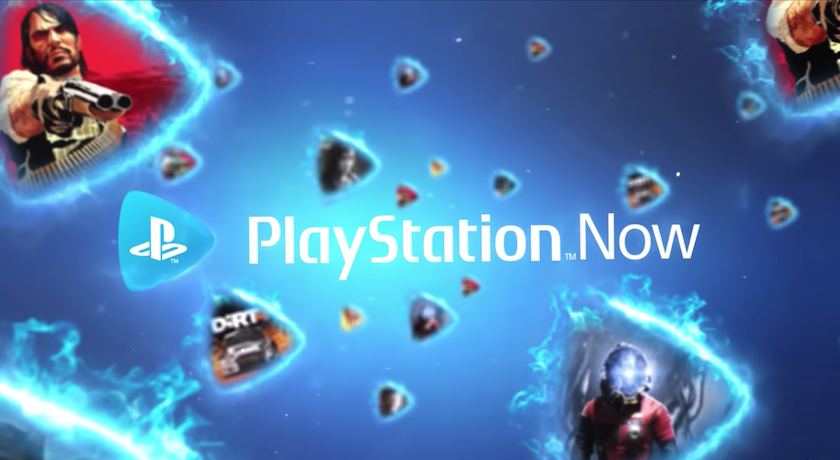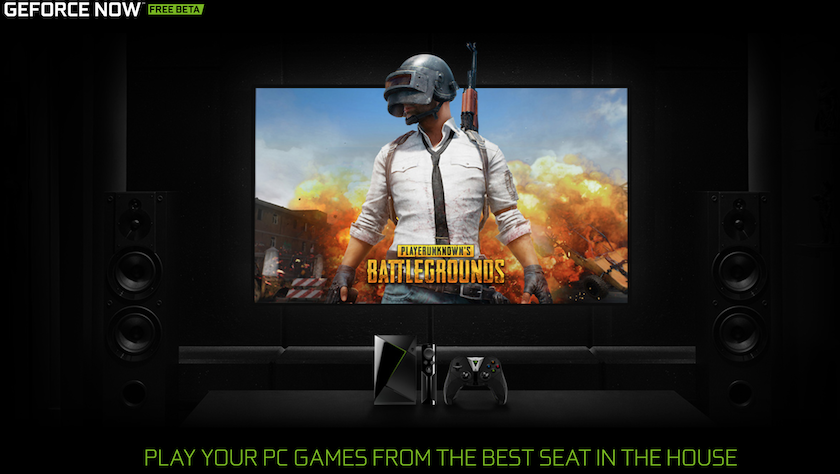What is cloud gaming?

Cloud gaming has been a buzzword haunting the video game industry for almost a decade, but now it’s becoming more than that. Also known as game streaming, the term refers to using the cloud, rather than local devices, to run games.
Essentially, the goal is to make high-end gaming experiences simpler and cheaper to access.
For a long time game streaming services existed as passing curiosities. They occasionally worked pretty well, but ultimately lacked support and a user base. There were also a lot of early kinks like not supporting Wi-Fi, as internet speeds were on average too slow, even in 2012.
Gone are the days of services like Gaikai or OnLive. Now we live in the era of big companies like Google, Sony, and Microsoft getting in on the action. If the Stadia logo popping up in most of this year’s E3 press conferences is any indication, this is where the industry is headed.
But how does cloud gaming work? Let’s break it down.
How does Cloud Gaming work?
Many people stream their movies these days, rather than buying DVDs or Blu-ray discs — heck, many computers don’t even come with disc drives anymore. Game streaming works very similarly, at least in principle.
Rather than owning the hardware necessary to run high-end (or really any) video games like a gaming PC or console, game streaming lets users offload the processing demands to a company’s server. Basically, when you start running a game using a cloud gaming service, rather than sticking a disc in your box at home or booting up an app you have installed, a server acts like a high-powered PC somewhere and does that for you, streaming a feed of the game from potentially thousands of miles away.
Take Google Stadia — it isn’t out yet, but we have a pretty good idea of how it works. When you log into Google’s new service and pick a game to play, a super powerful server at one of the company’s data centers starts running it. The server then sends a feed of that game running from the data center to your home where you can interact with it via a Chrome browser, phone, or Chromecast Ultra. Using the Stadia controller, the service logs your inputs and sends them back to the server, which then carries them out and streams the result back to you.

Cloud gaming services other than Stadia work very similarly. Playstation Now obviously uses a Playstation 4 as its local device, and ones like Shadow, Vortex, and Parsec all use PC interfaces, and support gamepads as well as mouse-and-keyboard configurations. Regardless of the input method, the principle remains the same. The services run a game on a server, log your inputs remotely, and stream back the result.
It’s actually a relatively straightforward concept. Rather than inputting the commands yourself, you’re just telling a more powerful computer somewhere else to do it. Of course, executing that in a manner even remotely playable is incredibly complicated. Internet speeds have only recently increased to the point where this kind of service could be widely accessible, and there are still plenty of connection and compatibility limitations.
Stadia will work on PC, Chromecast, and mobile, but mobile connections are limited to Wi-Fi, presumably until 5G becomes widespread enough to handle speeds such as the service needs.
Smaller services like Vortex, Parsec, and Shadow all support Mac, PC, and Android.
How much does cloud gaming cost?

A big part of the appeal of cloud gaming is how much less someone will have to pay to enjoy a high-end gaming experience, but figuring out how much it actually all costs can get pretty complicated.
In an ideal world, cloud gaming services would all function more or less like Netflix, with a flat monthly subscription and a wide variety of games to play on whatever platform you please. No service quite captures that, nor will one for the foreseeable future.
When it launches in November, the Google Stadia Pro service will cost $9.99 a month, giving access to a limited selection of free games, as well as more available for purchase. Right now, the only way to become a Pro subscriber in 2019 is to buy the $129 Stadia Founders Edition. Some time in 2020, Stadia Pro subscriptions will open up more widely and a Stadia base service will launch, letting you stream games you buy on the service without a monthly fee.
Considering Google is probably the biggest player entering the cloud gaming market, it feels a little telling that Stadia’s launch plan is this muddled. Apart from the date of the initial limited rollout of the service, we don’t really know when Pro subscriptions or the free Stadia service will launch.
Currently, the closest service to a Netflix-style experience is Playstation Now, which offers a relatively wide variety of Playstation 4 and Playstation 3 titles to stream on a Playstation 4 or Windows PC for $20 a month. Of course, it doesn’t work with non-Playstation devices, so no smartphone support.
Game subscriptions like Xbox Game Pass and EA Access, and recently announced ones like Ubisoft’s Uplay Plus and Apple Arcade, all offer similar games on-demand services for a flat monthly fee, but you have to download the games. Some of these services, like Uplay Plus, will eventually become available through Stadia, but that adds another subscription on top of Stadia Pro (at least until the free Stadia base service launches).
On top of the direct cost of these services, there’s a host of other factors to bear in mind.

The bandwidth requirements of streaming games in HD are considerably higher than streaming video. If you’ve got a bandwidth cap, or low speed internet (or both), odds are you’ll need a new internet plan to run something like Stadia. According to Google you only need a download speed of 20Mbps to access 1080p HDR gaming at 60fps. That seems reasonable if you live in an urban area where even cheaper plans comfortably exceed that. However, if you’ve got a cap on that, Stadia can apparently burn through up to 9GB of data an hour streaming at 1080p. People are going to burn through even halfway decent caps pretty quickly at that rate, which can incur added fees and eventually require a more expensive internet plan.
Additionally, the latency requirements of cloud gaming could put a strain on a lot of people’s routers, and may prompt upgrades. Lag doesn’t always come from a slow internet connection — packet loss often originates at the router, rather than the server.
With all these different subscription fees, and the potential hidden costs stemming from your hardware and data plans, it’s hard to say exactly how much getting into cloud gaming will all shake out to. We probably won’t have a very clear idea until after something like Stadia really takes off.
It’s very likely that going the cloud gaming route will save you money, at least compared to buying a $2,000 gaming PC. The console situation is a bit dicier, especially since Playstation Now actually offers that Netflix-style experience all the other services seem to lack. If you’ve still got to buy the games, it can all get very expensive very fast — just like more conventional gaming methods.
If you’re in the market for getting AAA games running on your Android device, you’ll be stuck on Wi-Fi for a while, but the only direct cost you’re looking at is a compatible controller and maybe a dock or mount of some sort. The make of the phone shouldn’t matter all that much, as again the processing is all happening on a server, but you’ll probably want one with a pretty nice screen at least.
What kind of Cloud Gaming services are there?
Cloud gaming tech has existed for a while already. We know about some services on the way, but a few are already out and available. Here are the ones you should know about.
Google Stadia
If you’re keen to get in on Stadia before 2020, you can pre-order the founders edition. It comes with a special Night Blue Stadia controller, a Chromecast Ultra, three months of Stadia Pro, and a buddy pass for giving three months to a friend, and releases in November.
Playstation Now
Playstation Now has been out for awhile, offering a relatively wide selection of Playstation 3 and Playstation 4 games to stream or download on your console or Windows PC. The service costs $19.99 per month, but you can get it a little cheaper if you buy in three-month or 12 month increments.
Nvidia GeForce Now
Graphics card giant Nvidia is currently running a closed beta of GeForce Now, the company’s new game streaming service for Windows, macOS, and Nvidia Shield. You can get on the waitlist for the beta. Once you get in, you can link your Steam, Epic Store, and Uplay accounts, and stream the games you own on those services, provided GeForce Now supports them.
Official release and price information hasn’t been announced, but using the beta is free.
Vortex
Game streaming service Vortex very much aims to be the Netflix of video games. Its pitch is simple: select from a large library of PC games, and stream them to almost any internet connected device, all for $9.99 a month. In practice, it’s a little more complicated.
Sure, you can definitely play games like the Witcher 3, League of Legends, and Fallout 4 on Android, but you’re limited to 100 hours of gameplay a month. Additionally, Vortex offers a mix of included games and ones you’ll have to buy on Steam to access. From of the looks of the library, if the game isn’t already free to play, you’ll probably have to buy it.
Vortex offers apps for Android and Windows, and also supports streaming through Chrome browsers.
Parsec
Parsec takes a slightly different approach to cloud gaming. You can rent company-owned PCs to stream games, but the service can also turn your PC into a server. Using Parsec you can stream the games installed to your computer to a ton of different devices. You can also stream games from your PC to more than one device, allowing local multiplayer modes to be played online.
Parsec offers apps for Windows, macOS, Android, Linux, and even Raspberry Pi.
Shadow
Shadow works a little differently to other cloud gaming services. Rather than offering an app-based interface, which you would then link with an Epic Store or Steam account, Shadow offers a full virtual Windows PC interface. That’s right, this is a full cloud-based high-end PC and you can not only play games on it, but run more demanding programs like Photoshop or Premiere Pro.
This service offers a wider array of capabilities, but it’s also a bit on the expensive side. The annual subscription plan costs $24.99 per month, and the month-to-month plan costs $34.99 per month.
Project xCloud
This is the service we currently know the least about. Project xCloud is Microsoft’s forthcoming cloud gaming service, apparently compatible with Xbox One, the unannounced next Xbox codenamed Project Scarlett, as well as Windows and mobile devices. The service will run on Microsoft’s Azure server system and apparently it’s meant to complement the company’s console offerings, rather than replace them. Past that, we really don’t know much.
Cloud gaming is well on its way to becoming a huge force in the games industry. Soon enough many of us might be playing our favorite AAA games on our phones, mediocre laptops, and Chromecasts. While there are still a number of hurdles to cross before cloud gaming is truly accessible technology, it feels like we’re on the cusp of something big.







Comments
Post a Comment